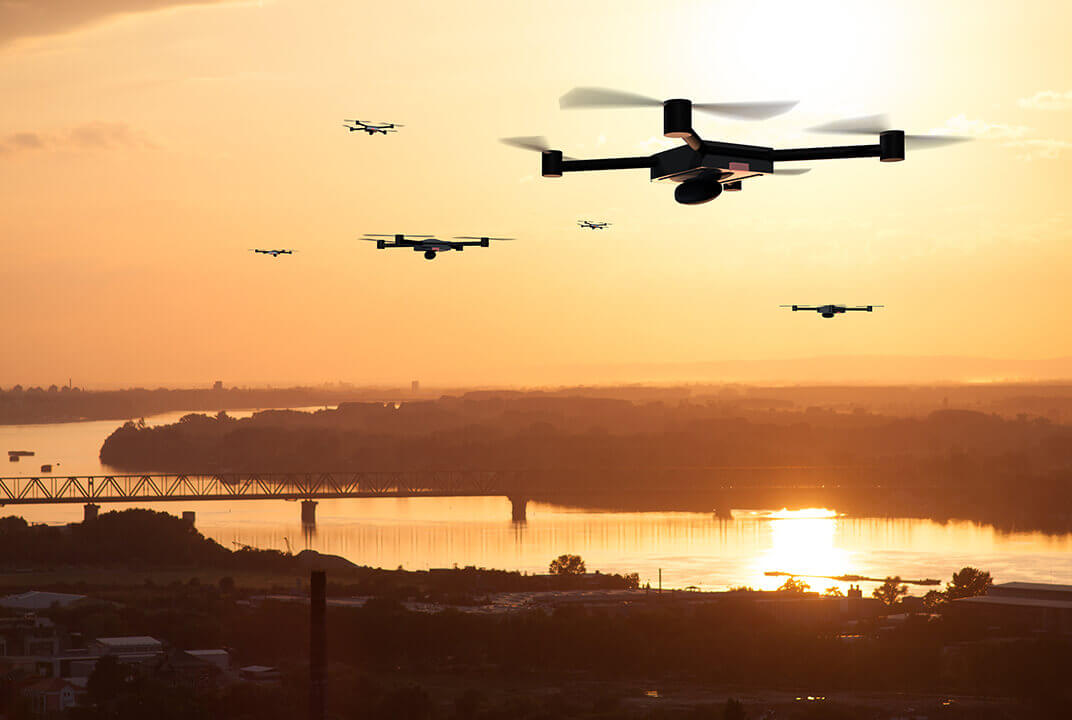The quest for aviation sustainability
Iris delivers high-bandwidth, cost-effective satellite-based data link communications for global ATM modernisation.
Our ground-breaking Iris Air Traffic Management (ATM) programme with the European Space Agency (ESA) is a key component of modernising and digitalising the aviation industry.
Powered by SB-S, our award-winning broadband platform for the cockpit, Iris uses secure IP connectivity to relieve pressure on congested VHF radio links, which are near capacity. This supports the Single European Skies ATM Research (SESAR) masterplan for next-generation air traffic management and creates a number of power benefits for airlines and Air Navigation Service Providers (ANSPs), such as minimising flight delays, saving fuel and reducing the environmental impact of air travel.
With the announcement of Iris Global, the programme is expanding beyond Europe and marks the beginning of a global evolution of digital ATM through Inmarsat’s ELERA satellite constellation, available worldwide and compliant with global Aeronautical Telecommunication Network (ATN) standards ATN/OSI and ATN/IPS.
Advanced capabilities
Iris implements the satcom hardware and applications needed to track aircraft in four dimensions - latitude, longitude, altitude, and time - using ‘4D Trajectory-Based' operations (TBO). This enables flights to be precisely tracked and traffic to be efficiently managed, allowing pilots and controllers to calculate the shortest available routes, cruise at optimum altitudes and use continuous climb and descent paths. TBO improves the efficiency of all flight phases (departure cruise and arrival), Eurocontrol estimates that an improved ATM will contribute to reducing fuel burn by 6% to 11%.
In addition, pilot-controller communications move from voice communications to text messages, improving the clarity of communication and increasing operational safety and efficiency. And the additional bandwidth available in the cockpit can be put to use for real-time connected Electronic Flight Bag (EFB) applications.
Iris also protects aircraft communications from cyber threats with security gateways, which provide an end-to-end encrypted VPN barrier between the ground and each aircraft, assuring mutual authentication and integrity of data exchange. They securely connect flight management systems onboard the aircraft to the corresponding systems used by air traffic controllers on the ground.
These advanced capabilities of Iris will mark a step change, helping to address the limitations of today’s legacy protocols and paving the way for more efficient, cost-effective air traffic management around the world.
Unprecedented environmental benefits
One of Iris’ greatest benefits is its positive impact on the environment. SESAR Joint Undertaking estimates that 5-10% of CO2 emissions generated by flights are avoidable due to outdated aviation infrastructure, which generates unnecessarily long trajectories and congestion in the air. Iris technology reduces fuel burn and emissions, lessening aviation’s impact on the environment.
Iris is a quick win for de-carbonisation and the journey to net zero aviation. According to ESA, average CO2savings per year in Europe alone are estimated to be 6.5M tonnes by 2040, with a cumulative savings total of 27-55M tonnes. That’s annual savings of CO2 comparable to the annual emissions of major European cities like Seville and Florence.
We are proud to offer this unique technology to transform air traffic management (ATM) and deliver the benefits of the digital age. The congested skies over Europe will be the first to benefit from Iris, with a global rollout coming over the next decade. Iris will provide the vital bandwidth to reduce air traffic delays, emissions, and open up the skies. And most importantly, Iris will reduce aviation’s carbon footprint – creating a better world for all of us, for generations to come.

